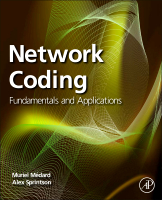Welcome
Welcome to the website for Medard, Sprintson: Network Coding: Fundamentals and Applications, 1st Editionst Edition.
Network Coding
About this Companion Site
This Site consists of Color figures.
Colour figures
Chapter 03Disclaimer
Information provided in this document is provided "as is" without warranty of any kind, either express or implied. Every effort has been made to ensure accuracy and conformance to standards accepted at the time of publication. The reader is advised to research other sources of information on these topics.
The user assumes the entire risk as to the accuracy and the use of this document. This document may be copied and distributed subject to the following conditions:
All text must be copied without modification and all pages must be included;
All copies must contain the appropriate copyright notice and any other notices provided therein; and
This document may not be distributed for profit.
